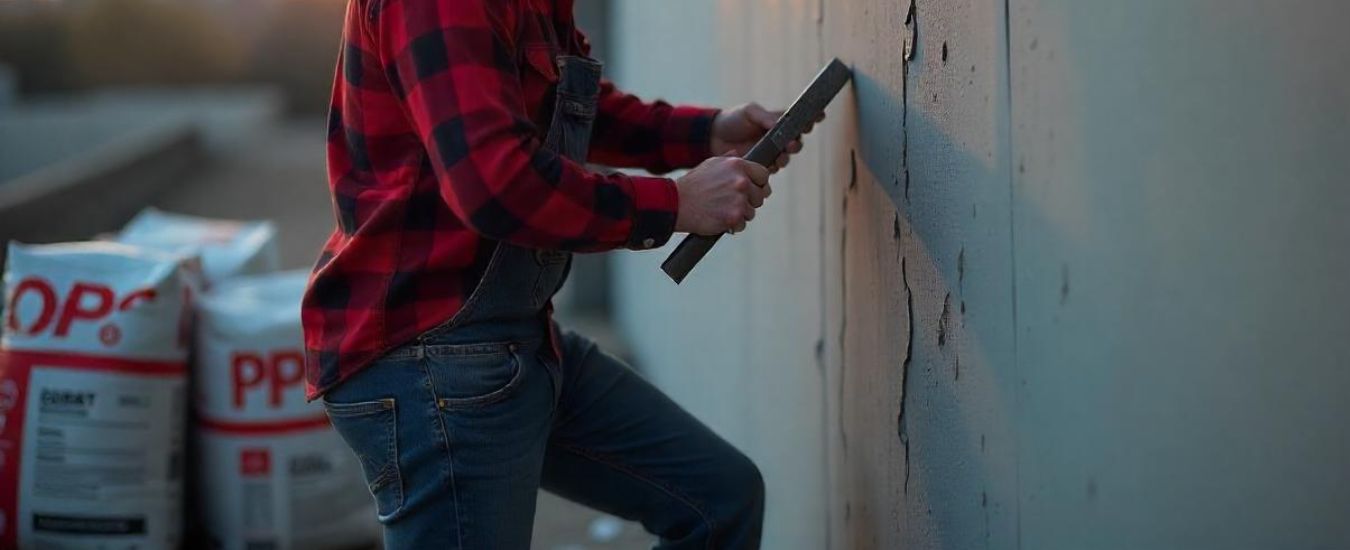Plastering might seem like a simple finish to a wall, but the truth is—choosing the right cement makes all the difference between a flawless finish and a cracked mess. Whether you’re a homeowner or a civil engineer, this guide will walk you through the best cement types for plastering and how to make the perfect choice.
Why Choosing the Right Cement Matters?
The quality of plastering determines the final aesthetics, waterproofing, and even structural durability of your walls. Using the wrong cement can lead to:
- Hairline cracks
- Uneven finishes
- Poor adhesion
- Costly repairs later
Difference Between Plastering and Other Applications
Unlike concrete casting or bricklaying, plastering demands smooth texture, fine particle size, and better workability. Cement used for plastering must bond well with sand and provide a uniform, crack-free finish.
Which Cement is Best for Plastering? Types of Cement Used in Plastering
Let’s look at the most common cement types and their pros and cons:
Ordinary Portland Cement (OPC)
OPC is the most widely used cement. It comes in 33, 43, and 53 grades.
- OPC 33 Grade: Ideal for plastering—slower strength gain but smoother finish
- OPC 43 Grade: Also good—used in general plastering
- OPC 53 Grade: Stronger but quick-setting—can lead to cracks if not handled well
✅ Best Use: Interior plastering, areas requiring faster setting
Portland Pozzolana Cement (PPC)
Made by mixing fly ash or pozzolanic material with OPC.
- Slower setting time = Better workability
- Finer particles = Smoother finishes
- Economical & eco-friendly
✅ Best Use: Internal and external plastering
Portland Slag Cement (PSC)
Created by blending granulated slag from steel plants with OPC.
- High durability
- Saltwater-resistant
- Low heat of hydration
✅ Best Use: Coastal areas, damp zones
White Cement
Mostly used for decorative or aesthetic plastering.
- Bright white finish
- Ideal for final layer coating
✅ Best Use: False ceilings, interior design walls
Key Factors in Selecting Cement for Plastering
To make the right cement choice, consider:
- Fineness: Finer cement gives a better finish
- Setting Time: Slower is better for plastering
- Workability: More workable cement eases the job
- Durability: Important for external plaster
- Crack Resistance: Key for long-term finish quality
- Cost: PPC and PSC are budget-friendly
- Weather Resistance: Use durable cement for outdoor plastering
OPC vs PPC vs PSC – Head-to-Head Comparison
| Feature | OPC | PPC | PSC |
|---|---|---|---|
| Strength | High | Medium-High | Medium |
| Workability | Moderate | High | High |
| Crack Resistance | Low | High | High |
| Cost | Higher | Lower | Moderate |
| Setting Time | Fast | Slow | Slow |
| Finish Smoothness | Moderate | Very Good | Good |
🏆 Verdict: For most plastering jobs, PPC is the winner due to its fine texture, workability, and affordability.
Recommended Cement Grades for Plastering
Ceilings & Final Coats: White cement (optional)
Internal Plaster: OPC 43 or PPC
External Plaster: PPC or PSC
Ideal Sand-Cement Ratios for Plastering
| Application | Cement:Sand Ratio |
|---|---|
| Internal walls | 1:6 |
| External walls | 1:4 or 1:5 |
| Ceilings | 1:3 (with extra caution) |
Always use well-graded, washed sand to avoid shrinkage cracks.
Cement Recommendations by Use Case
- Home walls & ceilings: PPC
- Wet areas (bathroom, basement): PSC
- Luxury interiors: White Cement (for final layer)
- High-rise walls exposed to sun: PPC with low shrinkage
Common Mistakes to Avoid During Plastering
- Using OPC 53 without plasticizer = cracks
- Skipping curing = brittle plaster
- Mixing salt-contaminated sand = weak plaster
Expert Tips for Perfect Plastering
- ✅ Cure for at least 7 days
- ✅ Use plasticizers for better workability
- ✅ Always check freshness of cement (not older than 3 months)
- ✅ Mix plaster in small batches
IS Codes and Standards to Follow
- IS 1661: Code of practice for application of cement plaster
- IS 8112: For 43-grade OPC
- IS 1489: For PPC
- IS 455: For PSC
Following these ensures safety, strength, and finish quality.
FAQs
What is the best cement for internal plaster?
PPC is ideal due to its fine texture, smooth finish, and low cracking tendency.
Can we use PPC cement for plastering?
Yes, it’s highly recommended for both internal and external plastering.
Is OPC 53 grade too strong for plastering?
Yes, it sets fast and may crack if not properly cured—better to use OPC 43 or PPC.
What causes cracks in plaster walls?
Fast setting cement, poor curing, or incorrect sand mix can lead to cracks.
How long should plaster be cured after application?
Minimum 7 days of regular water curing ensures durability and crack resistance.

